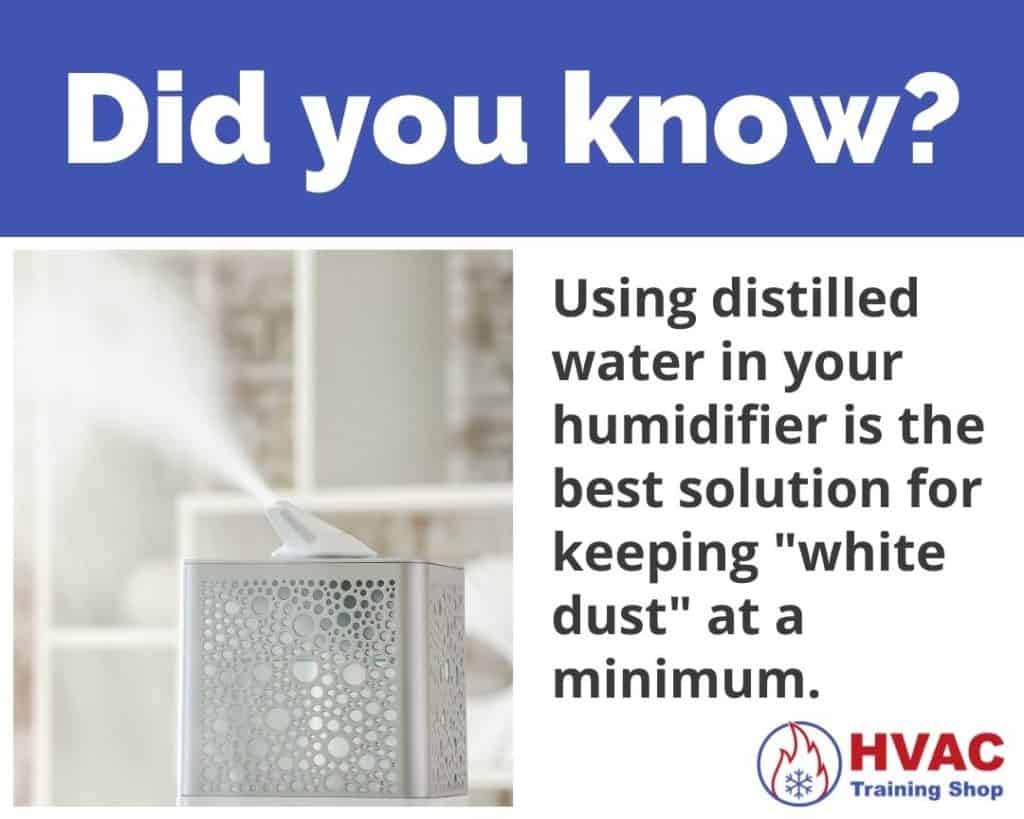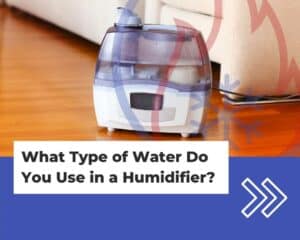Have you noticed that your humidifier just isn’t performing as well as it used to?
Maybe the air in your home is drier. Or the humidifier is running and not using any water.
Or worse yet—the inside of your humidifier has a dirty scale or microbe buildup—which is hazardous to your health.
Either way, humidifiers need to be cleaned regularly.
In this article, I’ll explain three different ways to clean your humidifier.
I’ll also provide helpful tips for humidifier maintenance, so your humidifier is always clean and in top shape.
Let’s get started!
A few notes about cleaning your humidifier
Before you start cleaning your humidifier, there are a few things to keep in mind.
Don’t leave your humidifier out in direct sunlight to dry, because it can warp and crack easily. It should be propped up so the water has a chance to evaporate completely. Also, try to keep your humidifier away from windows where it gets cold during winter. Humidifier parts can crack if they get too cold.
Cleaning your humidifier is necessary because the humidifier might get clogged with mineral deposits and bacteria if it is not cleaned regularly.
Three popular methods include cleaning humidifiers with vinegar, saline solution, or bleach. All three methods are effective in breaking down minerals in humidifier water tanks. Their differences stem from how powerful they are at cleaning and sanitizing the tank.
Below I’ll go over the steps on how to clean your humidifier with each of the three methods.
How to clean a humidifier with vinegar
Cleaning a humidifier with vinegar is a popular choice because it’s easily accessible and safe to work with.
In fact, for most people, I recommend using vinegar to clean their humidifier. It gets the job done just fine.
Here are the steps to clean your humidifier with vinegar:
- Turn off and unplug your humidifier.
- Pour out humidifier water from the reservoir.
- Pour at least 1 cup of vinegar into the humidifier reservoir. You can use more vinegar if you want to—the idea is to soak the inside of the reservoir with vinegar.
- Wait 20 minutes to let the vinegar soak into the scale buildup in the reservoir.
- Use a nylon cleaning brush to scrub the inside of the humidifier. Aim for the areas with excessive build-up.
- After you are done cleaning the reservoir, empty the vinegar out and rinse the tank with water.
- Put your humidifier back together and fill its tank up. It’s ready to run again!
How to clean a humidifier with bleach
If you need a stronger, sanitizing solution, then cleaning your humidifier with bleach is what you need to do. Especially if you have mold or bacteria growth in your humidifier.
Keep in mind that for general cleaning and de-scaling, vinegar works just fine. Cleaning a humidifier with bleach is usually the final step in the cleaning process. Use bleach to sanitize the humidifier and eliminate microbes.
Note: If you have an evaporative humidifier, do NOT use bleach to clean the humidifier’s wick. Bleach will destroy the antimicrobial properties that the wick has.
Here are the steps to clean your humidifier with bleach:
- Turn off and unplug your humidifier.
- Pour out humidifier water from the reservoir.
- Make a solution of 1/2 cup bleach to 1 gallon of water. You may need more or less depending on the size of your humidifier’s tank.
- Dump the solution into the humidifier tank and allow it to soak for at least half an hour.
- Scrub the inside of the humidifier’s tank while the solution is soaking to remove any mold or mineral build-up.
- After the solution has soaked for half an hour, the tank is sanitized. Dump out the bleach and rinse the tank with clean water.
- Put your humidifier back together and fill its tank up. It’s ready to run again!
How to clean a humidifier with saline solution
Cleaning a humidifier with a saline (salt) solution is a popular method because most people have salt in their cupboards.
Here’s a list of steps that you can follow to clean your humidifier with a saline solution:
- Turn off and unplug your humidifier.
- Pour out water from the humidifier’s reservoir.
- Make a solution of 1/4 cup salt to 1 gallon of water. You may need more or less depending on the size of your humidifier’s tank.
- Pour the saline solution in the humidifier’s reservoir and let it soak for half an hour.
- While the solution is soaking, scrub the inner walls of the humidifier reservoir with a nylon brush to remove any mineral build-ups.
- After the solution has soaked for half an hour, dump it out and rinse out your humidifier’s tank with clean water.
- Put your humidifier back together and fill its tank up. It’s ready to run again!
Using humidifier demineralization cartridges
When humidifier demineralization cartridges are installed, the calcium and magnesium that are in your tap water will react with the humidifier demineralization cartridge. As a result, the demineralization cartridge absorbs these minerals so they don’t build up inside your humidifier or get into the air in your home.
In my experience, demineralization cartridges work so-so. They definitely cut down on mineral build-up inside your humidifier, but they won’t completely eliminate it.
If you want to keep mineral build-up and white dust at a minimum, then your best bet is to use distilled water in your humidifier. Distilled water is treated to remove dissolved solids (the stuff that creates mineral deposits and white dust) from the water. You can buy distilled water from any grocery store.
How to clean a humidifier wick
If you have an evaporative humidifier, the wick is the spongy part that soaks up water.
The wick is somewhat delicate. Since it has an antimicrobial coating, you cannot clean it with bleach or other chemicals.
Instead, you can just clean the wick with water.
To clean the humidifier wick, remove the wick from your humidifier and soak it in water for about 20-30 minutes. Next, slosh the wick around in the water to dislodge any mineral build-up.
It should be noted that humidifier wicks are disposable and need to be replaced every so often. So cleaning the wick is only a temporary solution—you will need to replace the wick eventually.
Why you should clean your humidifier
There are a few reasons why you should clean your humidifier. For one, the humidifier itself is a breeding ground for bacteria and mold that can do all kinds of nasty things to your health since humidifiers help humidify the air in your home. A humidifier that’s not cleaned regularly is also at risk of getting infected by all sorts of bacteria, viruses, and even amoebas from the environment around it.
Microbial growth in humidifiers can also trigger an allergic reaction known as humidifier lung. For most people, humidifier lung is akin to an asthma attack, so it’s important to keep that humidifier clean!
Mineral deposits can also build up and decrease the humidifier’s effectiveness.
The mineral deposits can also get into the mechanical components of the humidifier to wear them down and cause operational issues. Additionally, a dirty humidifier puts out less humidified air than a clean humidifier does.




